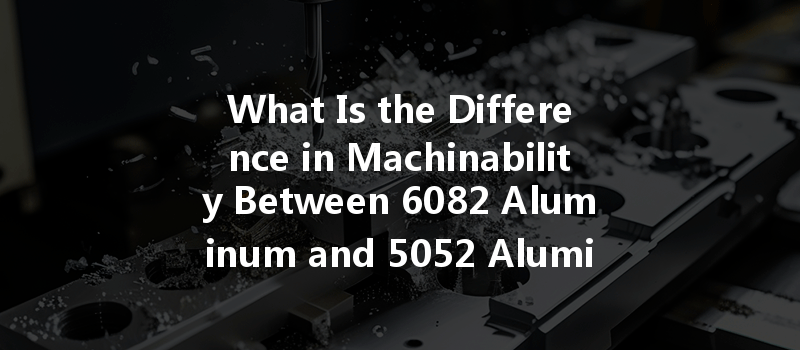Opening
Did you know that aluminum alloys comprise over 80% of the materials used in CNC machining due to their lightweight, corrosion resistance, and excellent machinability? Among the various aluminum grades available, 6082 and 5052 are two alloys frequently used in industries ranging from automotive to aerospace. However, what distinguishes the machinability of these two alloys, and how can manufacturers make an informed choice when selecting between them? This blog seeks to delve deep into understanding the differences in machinability between 6082 aluminum and 5052 aluminum in CNC machining.
—
Content
Understanding Aluminum Alloys
Before diving into the comparison between 6082 and 5052 aluminum, it’s crucial to grasp what aluminum alloys are and why they are essential for CNC machining. Aluminum is a versatile metal, mainly classified into wrought and cast alloys. The designation of aluminum grades usually includes a four-digit number, where the first digit represents the major alloying element. For example, in the 5000 series, magnesium is the main alloying element, while in the 6000 series, magnesium and silicon are primarily used.
Characteristics of 6082 Aluminum
Characteristics of 5052 Aluminum
Machinability Comparison
Machinability refers to how easily a material can be machined to precise dimensions and a good surface finish. It is influenced by several factors including the material’s hardness, thermal conductivity, and the tooling utilized during machining.
One of the critical aspects of machinability is how quickly a cutting tool wears down during machining operations.
2. Surface Finish Quality
Achieving a high surface finish is often a primary goal in CNC machining.

Chip formation during machining affects the efficiency and quality of the operation.
Thermal conductivity can significantly affect how an alloy behaves during machining:
CNC Machining Considerations
When transitioning into CNC machining, various factors must be planned for to get the best results:
Real-World Application Context
Understanding the difference in machinability between these two alloys can profoundly affect project outcomes in various sectors.
In aerospace, weight reduction is paramount. Projects requiring welded structures or corrosion resistance may lean more towards 6082 aluminum, while components needing malleability may benefit from using
2. Automotive Sector
For automotive parts, the demand for strength and durability often makes 6082 a preferred choice—especially in structural applications. Conversely, the marine environment greets the applications of 5052 due to its corrosion resistance.
When we consider scenarios such as production runs in a manufacturing environment, understanding the differences in machining performance helps accelerate production while reducing costs associated with tool wear and material wastage.
In conclusion, while both 6082 and 5052 aluminum alloys are excellent choices for CNC machining, the selection depends greatly on the specific requirements of each project. The distinctions in machinability, cutting tool wear, chip formation, and thermal properties highlight the need for careful consideration when picking between these two alloys.
This blog aims to reinforce that informed material selection can significantly impact the efficiency, cost-effectiveness, and quality of machining operations. By taking the time to understand the unique properties of each alloy, manufacturers can better optimize their CNC machining processes, ensuring superior final products that meet industry standards.
Ultimately, whether you’re working with structural components for aerospace, automotive parts, or any custom fabrication project, evaluating the differences between 6082 and 5052 aluminum in terms of usability and performance in CNC machining is critical to success. The more you understand these materials, the better your manufacturing decisions will be, leading to improved outcomes for your projects and clients.






